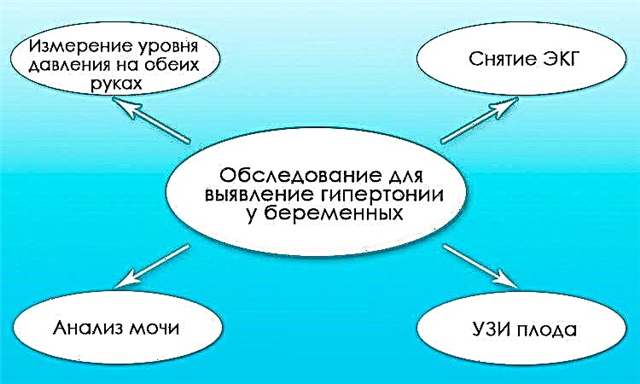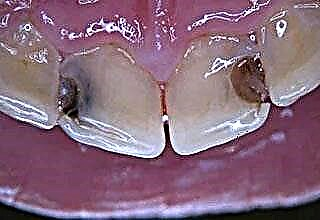Elevated temperature is a clear sign of the presence of inflammatory processes in the child's body. A febrile condition is a typical manifestation of the development of respiratory diseases, in particular laryngitis. The disease is characterized by an infectious inflammation of the larynx, false and true vocal cords. What can be the temperature with laryngitis in children?
First of all, you need to understand that the concept of normal temperature is quite relative and ranges from 35 ° C to 37 ° C. In many respects, it depends on the individual characteristics of the organism and the age of the child. For example, in babies under one year old, a temperature of 37 ° C is considered normal. Due to the imperfection of thermoregulation mechanisms, even in the absence of inflammation in the ENT organs, temperature indicators in preschool children during the day can vary from 36.6 ° C to 37.2 ° C.
Is fever friend or foe?
 Many parents immediately seek to stuff their child with antipyretic drugs when they have symptoms of fever. According to experts, this approach is fundamentally wrong. The fact is that an increase in body temperature signals that the body is fighting infectious agents that have entered the respiratory tract. Most pathogens die at 38-39 ° C. Therefore, in the absence of absolute indications and a relatively low temperature, antipyretic drugs should not be taken.
Many parents immediately seek to stuff their child with antipyretic drugs when they have symptoms of fever. According to experts, this approach is fundamentally wrong. The fact is that an increase in body temperature signals that the body is fighting infectious agents that have entered the respiratory tract. Most pathogens die at 38-39 ° C. Therefore, in the absence of absolute indications and a relatively low temperature, antipyretic drugs should not be taken.
It should be understood that fever is a defense mechanism that is triggered in response to viruses or microbes entering the larynx. Reproducing in tissues, pathogens secrete waste products, which provoke the body to fight the infectious flora. When inflammatory reactions occur in the respiratory tract, special substances (pyrogens) are synthesized in the child's body, which "make" changes in the temperature regime of the body. What is it for?
According to studies, during subfebrile and febrile fever, when the temperature rises to 39 ° C, interferon begins to be produced in the body. This substance is transported with the blood stream to the foci of inflammation and prevents the penetration of pathogenic microbes and viruses into the tissues there. Moreover, when the temperature regime changes, the reproductive function of pathogens is impaired, namely, the process of DNA or RNA replication slows down.
Laryngitis temperature
Young children are most often diagnosed with acute forms of viral or bacterial laryngitis. The disease is characterized by an acute onset and a sudden rise in temperature to subfebrile levels. If inflammation in the larynx is provoked by viruses (influenza virus, adenovirus, coronavirus), the thermometer can rise to 37.5-40 ° C.
Important! In children under 1 year old, even with a slight change in temperature, febrile convulsions may occur.
As a rule, with bacterial lesions of the ENT organs in children, subfebrile fever occurs, i.e. the temperature reaches a maximum of 38 ° C. But you need to understand that it is bacteria that release the largest amount of toxic substances into the blood, in response to which pyrogens are synthesized in large quantities in the body. In other words, if bacterial inflammation in the larynx is not stopped in time, the temperature will rise to 39-41 ° C.
How long does the temperature last?
The child suffers a rather hard fever, so the problem simply needs to be dealt with, and promptly. How long can hyperthermia persist in children? Changes in the temperature regime occur against the background of inflammatory reactions in the respiratory organs. Therefore, the duration of the fever depends entirely on how soon the inflammation in the larynx is stopped.
Few know that with a favorable course of viral laryngitis, hyperthermia passes on its own within 2-3 days. If relatively high temperatures persist for more than 3 days, it is most likely that microbial flora has joined the viral infection. Bacterial laryngitis is the most dangerous disease for a child, which causes allergic edema of the lining space. In this regard, in a small patient, stenosing phenomena may occur in the larynx and a false croup may develop.
With the timely use of antiviral and antimicrobial medicines, it is possible to normalize the temperature regime within a day.
Why is fever dangerous?
Fever plays the role of a protective-adaptive reaction only if the body temperature rises slightly. Changes in the processes of thermoregulation have a beneficial effect on local immunity, in particular on the reactivity of the laryngeal mucosa. In other words, during a fever, the body's resistance to disease-causing agents only grows. But what happens to the child if the thermometer rises to 40-41 ° C (pyretic fever)?
When the temperature regime changes, blood circulation in the body is intensified. And the higher the temperature, the faster the heart muscle must contract to pump a large volume of blood. It follows that pyretic fever creates an excessive load on the child's cardiovascular system. Scientists have calculated that with an increase in temperature by only 1 ° C, the heart muscle contracts 10-20 times more often in 1 minute.
But this is not the worst thing. With hyperthermia, it is the child's nervous system that suffers first. High temperature disrupts the process of protein synthesis in the body, which negatively affects the functioning of the brain. In this regard, the child may experience:
- hallucinations;
- attacks of aggression;
- convulsions;
- tachycardia;
- respiratory failure;
- extensive heart attack.
If the thermometer shows 38.5-39 ° C within 2-3 days, you should immediately contact your pediatrician. At higher temperatures, protein denaturation occurs in red blood cells, resulting in death.
How to measure temperature?
In the acute course of laryngitis, children usually complain of soreness in the larynx, persistent cough, malaise, nausea, and shortness of breath. When such symptoms appear, parents should arm themselves with a thermometer and measure the baby's body temperature. For these purposes, mercury, infrared and electronic thermometers can be used.
How to measure temperature?
- in the armpit;
- in the groin;
- in the rectum;

- in the oral cavity.
The most accurate measurement is the temperature in the anus with a rectal thermometer.
If in a small patient the thermometer readings stopped at around 37.-37.2 ° С, antipyretic drugs should not be used. By normalizing the temperature regime, you will only weaken the body's immune defenses and thereby provoke the development of pathogens in the laryngeal mucosa.
When to take antipyretics?
The temperature with laryngitis can change within 30-40 minutes, so measurements should be taken at least once every 1-1.5 hours. As already mentioned, with fever, the greatest stress falls on the child's cardiovascular system. To reduce the likelihood of complications, it is recommended to put the child to bed and cover with a blanket, but not too warm.
When can you give your child antipyretics? Antipyretics (antipyretic drugs) should be given to young children only when the temperature rises to 38-38.5 ° C.An exception can be made for children who suffer from cardiovascular and endocrine diseases. It is possible to bring down the temperature in such situations already with subfebrile fever.
Due to the development of respiratory disease, babies often lose their appetite. This process is quite natural, so you should not try to force feed the child. The body is trying to accumulate energy to fight infections, and the digestion process will only reduce the effectiveness of the resistance of the protective cells to pathogenic viruses and bacteria.
Safe antipyretics
What antipyretic drugs can be given to a child with laryngitis? Fever is a consequence of the development of inflammatory processes in the respiratory tract. To normalize the temperature regime, first of all, it is necessary to eliminate foci of inflammation in the larynx. For these purposes, it is best to use non-steroidal anti-inflammatory drugs (NSAIDs).
NSAIDs are a group of drugs with a wide spectrum of action; they simultaneously stop inflammation, lower fever and reduce pain in the larynx. In pediatric practice, paracetamol-based drugs are usually used to combat hyperthermia. They do not cause allergic reactions and hardly irritate the gastric mucosa:
- "Children's Motrin";
- Panadol;
- Nurofen;
- "Tsefekon D";
- Calpol;
- Tylenol;
- Efferalgan.
Since infants cannot take pills, drugs in the form of rectal suppositories, syrups, drops and suspensions are used to restore normal temperature. The most effective and safe remedies include Tsefekon, Viferon, Efferalgan and Viburkol.




